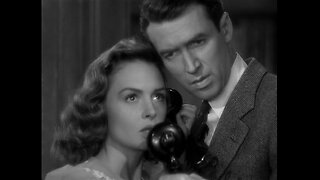Premium Only Content

Ludwig van Beethoven Sonata №9 For Violin And Piano In A Major, Op 47 The Kreutzer
#Beethoven #SonataNo9 #ViolinandPiano #AMajor #Op47 #TheKreutzer #ClassicalMusic #MusicalComposition #RomanticEra #GermanComposer #Violinist #PianoVirtuosity
LEONID KOGAN, violin
GRIGORI GINSBURG, piano
Ludwig van Beethoven's Sonata No.9 for Violin and Piano in A Major, Op. 47, commonly known as "The Kreutzer," is a masterpiece of classical music. Composed during the Romantic era by the legendary German composer and virtuoso, this sonata exemplifies Beethoven's innovative spirit and his ability to push the boundaries of musical expression.
Ludwig van Beethoven, born in 1770, is hailed as one of the most influential composers in music history. Composed in 1803, "The Kreutzer" Sonata was dedicated to the renowned violinist Rodolphe Kreutzer, though the latter never performed the piece. This sonata represents a significant shift in Beethoven's compositional style, characterized by its intensity, emotional depth, and technical demands. It stands as a testament to Beethoven's desire to challenge traditional musical forms and create works of profound artistic expression.
The Sonata No. 9 for Violin and Piano is structured in three movements: Adagio sostenuto - Presto, Andante con variazioni, and Presto. The sonata follows a traditional fast-slow-fast format, with each movement serving a unique purpose within the overall narrative. The opening movement begins with a hauntingly beautiful Adagio sostenuto, leading into an explosive and virtuosic Presto section. The second movement, Andante con variazioni, presents a series of contrasting variations on a theme, showcasing Beethoven's mastery of form and his ability to transform musical ideas. The final movement, Presto, brings the sonata to a thrilling and energetic conclusion.
"The Kreutzer" Sonata is characterized by its intense and dramatic musical dialogues between the violin and piano. Beethoven expertly weaves together intricate melodies and harmonies, creating a rich and dynamic interplay between the two instruments.
Beethoven's emotional depth is evident throughout the sonata, from the tender and introspective moments to the fiery and passionate passages. The music is imbued with a wide range of emotions, allowing listeners to experience a profound and immersive musical journey.
Beethoven's sonata presents technical challenges for both the violinist and pianist. It requires virtuosic skill, precision, and agility from both performers, as they navigate the intricate passages, rapid scales, and complex harmonies.
Beethoven employs a wide dynamic range in "The Kreutzer" Sonata, ranging from gentle pianissimos to powerful fortissimos. The contrast between soft and loud passages adds depth and intensity to the music, amplifying its emotional impact.
Conclusion:
Ludwig van Beethoven's Sonata No. 9 for Violin and Piano in A Major, Op. 47 "The Kreutzer," stands as a testament to Beethoven's genius and his profound contribution to classical music. Through its expressive dialogues, emotional intensity, technical demands, and dynamic range, this sonata captivates audiences, taking them on a journey of musical exploration. It remains a cherished part of the classical repertoire, representing Beethoven's revolutionary spirit and his ability to create compositions that resonate with listeners across generations. "The Kreutzer" Sonata continues to inspire and awe with its timeless beauty and profound musical expression.
You have the opportunity to support the channel:
https://destream.net/live/RadSiarAl/donate
https://www.buymeacoffee.com/6355radsiaral
-
 33:49
33:49
Quite Frankly
23 hours agoThe Christmas Eve Midnight Telethon
102K22 -
 2:12:46
2:12:46
Price of Reason
22 hours agoAmber Heard BACKS Blake Lively Lawsuit Against Justin Baldoni! Is Disney CEO Bob Iger in TROUBLE?
51.7K23 -
 1:01:17
1:01:17
The StoneZONE with Roger Stone
17 hours agoChristmas Edition: Why the Panama Canal is Part of the America First Agenda | The StoneZONE
127K47 -
 18:12:15
18:12:15
LFA TV
1 day agoLFA TV CHRISTMAS EVE REPLAY
142K18 -
 13:32
13:32
Scammer Payback
18 hours agoChanging the Scammer's Desktop Background to his Location
9.47K3 -
 4:21
4:21
BIG NEM
20 hours agoNikola Tesla's Secret to Cultivating Creativity & Genius
8.76K1 -
 15:03
15:03
The Anthony Rogers Show
1 day agoAnthony Rogers - Live at Cusumano's Pizza (Upstairs)
6.96K1 -
 4:33:48
4:33:48
tacetmort3m
1 day ago🔴 LIVE - THE ZONE KEEPS PULLING ME BACK - STALKER 2 - PART 15
71.8K13 -
 22:45
22:45
Brewzle
1 day agoI Went Drinking In A Real Bourbon Castle
52.1K4 -
 48:36
48:36
PMG
2 days ago $4.75 earned"Parkland Parent Speaks Out On Kamala Harris Using Victims"
42.2K12